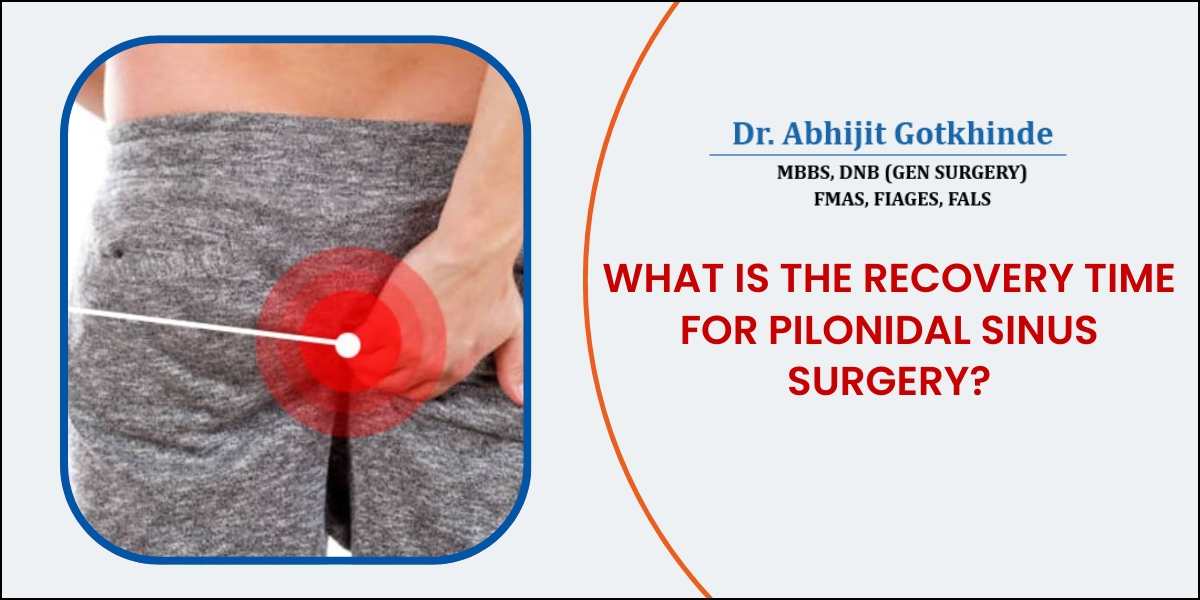Recovery time for pilonidal sinus surgery
Dealing with a pilonidal sinus can be a painful and recurring problem. If you’ve been recommended surgery, one of your biggest questions is likely, “What is the recovery time for pilonidal sinus surgery?” The answer isn’t one-size-fits-all, as it heavily depends on the type of surgical procedure performed.
Understanding the different surgical options and their respective healing timelines can help you set realistic expectations and plan your life accordingly. Let’s break down the recovery process for the most common pilonidal sinus surgeries.
Recovery Time Based on Surgery Type
1. Open Excision & Healing by Secondary Intention
In this traditional method, the entire sinus tract is removed, and the wound is left open to heal from the inside out.
-
Initial Recovery: 1-2 weeks off work (longer for physically demanding jobs).
-
Wound Care: Requires daily dressing changes for several weeks.
-
Full Healing: Can take 6 to 12 weeks or even longer. This is the longest recovery period but has a lower recurrence rate in some cases.
2. Closed Excision & Primary Closure
Here, the sinus is removed, and the wound is stitched closed.
-
Initial Recovery: You may return to a desk job within a week.
-
Stitch Removal: Stitches are typically removed after 10-14 days.
-
Full Healing: The skin heals in about 2 to 4 weeks. The recovery is faster, but there is a higher risk of wound breakdown and infection.
3. Minimally Invasive Techniques (e.g., Pit Picking, EPSIT)
Modern techniques like the EPSiT (Endoscopic Pilonidal Sinus Treatment) are revolutionizing pilonidal sinus treatment. Performed by a skilled laparoscopic and GI surgeon in Pune like Dr. Abhijit Gotkhinde, these procedures involve a tiny camera to remove the sinus tract.
-
Initial Recovery: Often just 1-2 days. Patients can usually return to a desk job within 3-4 days.
-
Wound Care: Minimal; usually just a small bandage.
-
Full Healing: Most patients are fully healed within 2 to 3 weeks. This option offers the quickest recovery and minimal pain.
Factors Influencing Your Recovery Time
Your individual healing timeline can be affected by:
-
The Surgical Technique: As shown above, minimally invasive surgery offers the fastest recovery.
-
Your Overall Health: Good nutrition and being a non-smoker significantly speed up healing.
-
Following Post-Op Instructions: Meticulous wound care and avoiding pressure on the tailbone are crucial.
Choosing the Right Path to Recovery
The recovery time for pilonidal sinus surgery varies widely, from a few weeks for minimally invasive procedures to several months for open healing. Consulting with an expert is the first step toward a smoother and quicker recovery.
If you are seeking a modern, less painful solution with a faster return to your daily life, consider consulting Dr. Abhijit Gotkhinde, a renowned laparoscopic surgeon in Pune. Specializing in advanced minimally invasive pilonidal sinus treatment.
Frequently Asked Questions (FAQs)
1. What is the fastest way to recover from pilonidal sinus surgery?
The fastest recovery comes from choosing a minimally invasive technique like EPSiT, followed by strict adherence to your surgeon’s post-operative care instructions, including proper wound hygiene and avoiding sitting for prolonged periods.
2. Can a pilonidal sinus heal without surgery?
In some acute, first-time cases with an abscess, incision and drainage can provide relief. However, for a chronic or recurrent pilonidal sinus, surgery is often the definitive treatment to prevent future flare-ups.
3. How painful is pilonidal sinus surgery?
Pain is manageable with prescribed medications. Minimally invasive surgeries like EPSiT are significantly less painful than open procedures, with most patients reporting only mild discomfort.
4. How should I sleep after pilonidal sinus surgery?
Sleep on your side or stomach to avoid direct pressure on the surgical site. Using a donut pillow or cushion is also recommended when sitting.
5. What are the signs of infection after surgery?
Watch for increased pain, redness, swelling, warmth around the wound, foul-smelling discharge, or a fever. Contact your pilonidal sinus specialist immediately if you notice any of these signs.

